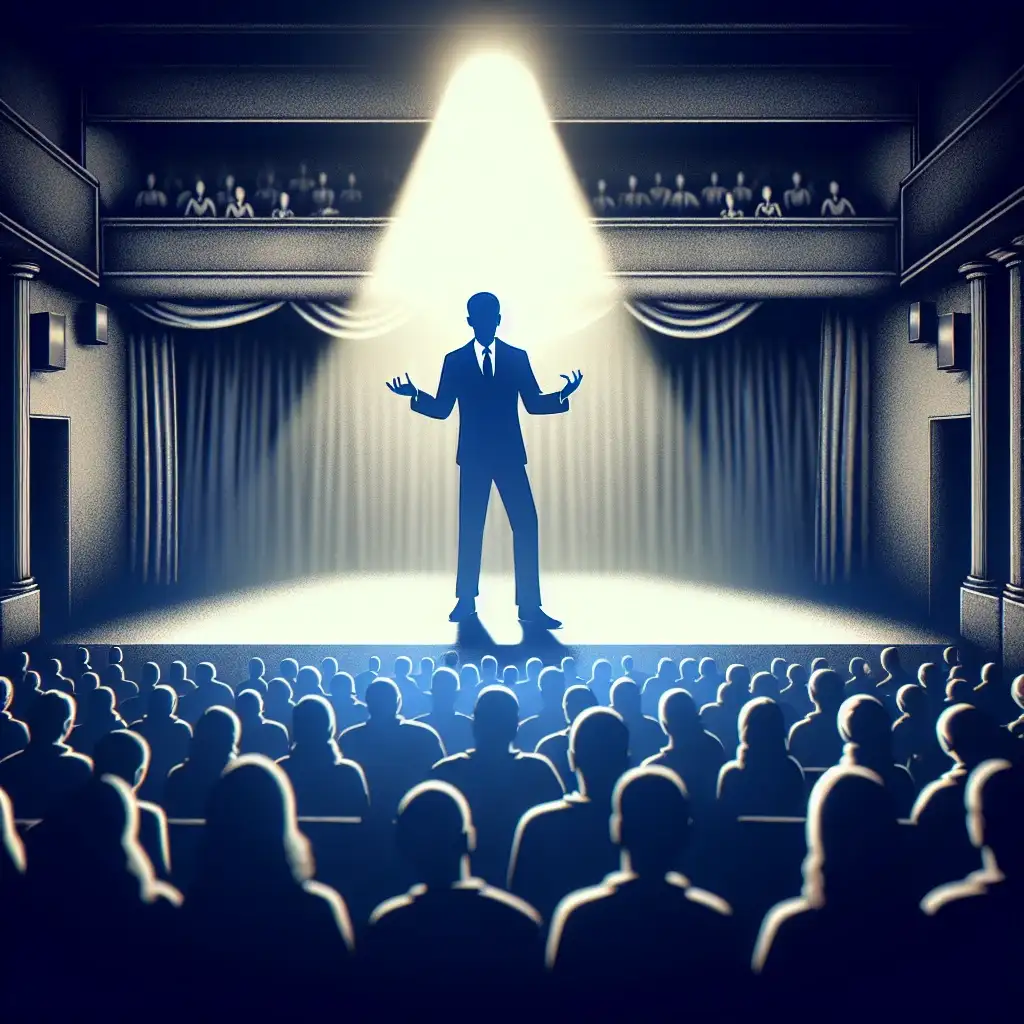Key Points
- Revolutionize modern presentations by enhancing audience engagement and non-verbal signaling through silent movie techniques.
- Craft a visual journey in your presentation using visual aids and expressive gestures, inspired by storytelling in silent films.
- Utilize non-verbal communication through gestures, facial expressions, and strategic pauses for a more impactful and engaging presentation experience.
Have you ever wondered what silent movies can teach us about modern communication, particularly in the realm of presentation skills? It’s a question that might seem out of left field, but the connection between the silent film era and today’s high-tech presentation environments is more profound than you might think. By exploring and utilizing silent movie techniques, presenters can unlock a treasure trove of benefits, including enhanced audience engagement, better communication of emotion and story, and improved non-verbal signaling.
Silent movies, devoid of spoken dialogue, relied heavily on expressive body language, exaggerated expressions, and visual storytelling to convey plots and emotions. These elements are surprisingly applicable and beneficial in elevating the delivery and effectiveness of modern presentations. Let’s delve into how these seemingly archaic methods can revolutionize the way we present.
The Power of Visual Storytelling
”Silent films were all about showing, not telling,” says Professor Maria Gonzalez, a film studies expert. She points out that this is directly applicable to effective presentations, where showmanship can often be more engaging and more memorable than just telling. Utilizing visual aids, akin to the creative backgrounds and settings in silent films, can significantly enhance the viewer’s understanding and retention of information.
-
Crafting a Visual Journey: Think of your presentation as a silent film where the slides are scenes contributing to a larger narrative. Each slide should be able to stand on its own, conveying its part of the story through imagery, charts, or key phrases, much like a silent movie frame.
-
Expressiveness Over Dialogue: Over-reliance on spoken words can sometimes dilute a presentation’s impact. Silent film stars used facial expressions and body language to evoke emotions and tell a story. Presenters can adopt this technique by using expressive gestures and facial expressions to accompany their words, creating a more engaging and emotionally resonant experience for the audience.
The Magic of Non-Verbal Communication
In silent cinema, actors communicated complex ideas and emotions without uttering a single word. This non-verbal prowess is a goldmine for presenters, who can harness the power of silent cues to complement their verbal messages.
-
The Vocabulary of Gestures: Gestures can add a new layer of meaning to your spoken words, making your presentation more dynamic and understandable. For example, open hand gestures can signify honesty and openness, while pointing or using the hands to illustrate size or direction can help emphasize key points.
-
Facial Expressions and Eye Contact: Silent movie stars had expressive faces that spoke volumes. In a presentation setting, maintaining eye contact and using facial expressions consciously can help form a connection with the audience, making your message more impactful. “The eyes can say more than words ever could,” remarks John Stewart, a renowned public speaking coach.
-
Pause for Effect: One of the most striking aspects of silent films is their use of pause – moments filled with tension or emotion, stretched out for effect. Presenters can use strategic pauses to allow important points to resonate with the audience, creating space for reflection and anticipation.
Silence is Golden
In a fast-paced world, silence during a presentation can speak louder than any word. It draws the audience in, creating a moment of anticipation that makes the next words even more powerful. Imagine, for a moment, a silent pause after a crucial point is made, allowing the weight of the message to sink in fully. This technique, reminiscent of suspenseful moments in silent films, can significantly enhance the impact of your message. Have you noticed how in conversations, moments of silence often prompt more attentive listening? Applying this in presentations can lead to heightened engagement. Just as silent movies use pauses to build tension, strategic silence in your talk can underscore your key messages. Lastly, think of silence as the canvas of your presentation: it highlights the colors of your words and expressions, making them stand out in the listener’s mind.
Conclusion
Embracing silent movie techniques in presentations is like uncovering a hidden gem in the art of communication. This approach encourages us to go back to basics, focusing on the power of visual stories and expressive gestures that resonate across languages and cultures. Imagine showing up for a presentation and, instead of bombarding the audience with facts and figures, you captivate them with a dynamic visual narrative and meaningful silences, akin to a silent movie star commanding the screen. Such techniques not only make your message more memorable but also forge a deeper emotional connection with your audience, making them feel as if they’re part of a unique experience. So, whether you’re speaking to a small team or a large conference, injecting the essence of silent cinema into your delivery can truly set you apart, ensuring your message isn’t just heard, but felt and remembered.

